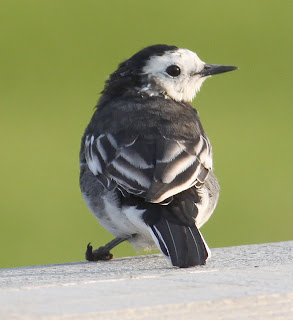What to do on another non-birding, non-ringing, windy, dismal, grey, drizzly morning and afternoon?
I turned my attention to sorting through the folders in Photoshop, where I dumped a number of inferior images in favour of some newer, sharper, and brighter versions. It’s much like the world of birding, where grumpy old birders droning on about “common” birds are best ignored, ditched in favour of superior, up-to-date versions with all the essentials for birding street cred – a permanently switched on pager and a Western Palearctic list containing Atlantic island endemics.
Here is a very significant list.
“August 2011 - The Pan-European Common Bird Monitoring Scheme has compiled population figures for 145 common and widespread bird species in 25 European countries between 1980 and 2009. Amongst those species covered, farmland birds are the most threatened group, with 20 out of 36 species in decline, and overall numbers at an all-time low, down by 48% since 1980. Some of the species that have declined the most over the last three decades include familiar farmland birds like Grey Partridge Perdix perdix (–82%), Skylark Alauda arvensis (–46%), Linnet Carduelis cannabina (–62%) and Corn Bunting Miliaria calandra (–66%).”
Here are a couple of images Photoshopped from this morning’s task.



“The results of the European bird population survey suggest that after missing its 2010 biodiversity conservation target, the EU will go on to miss the 2020 biodiversity conservation target unless decisive and urgent action is taken.”
And again. ”According to the State of Europe's Common Birds report, the European Turtle Dove population in Europe fell by 62% in recent times. This is partly because changed farming practices mean that the weed seeds and shoots on which the dove feeds, especially Fumitory, are more scarce, and also partly due to shooting of birds in Mediterranean countries during their migration.”

From the BTO, October 2011 – “It is six years since the inception of Environmental Stewardship (ES), England’s second generation agri-environment scheme. Although the formal target to reverse the declines was abolished by the present Government, the commitment to agri-environment funding remains. However the CAP which funds such schemes in Europe faces renewal in 2013, at a time of growing competing demands for land and agricultural production. Agri-environment policy in Europe is therefore at a crossroads. Sound evidence for the efficacy (or otherwise) of AES provision, coupled with the need to provide value for taxpayer’s money is more important than ever before. Across Europe, policy- makers will ask whether farmland bio diversity conservation is worth the expense and whether AESs are the best way to spend the money”.


Where shall we go tomorrow?



















































.jpg)












